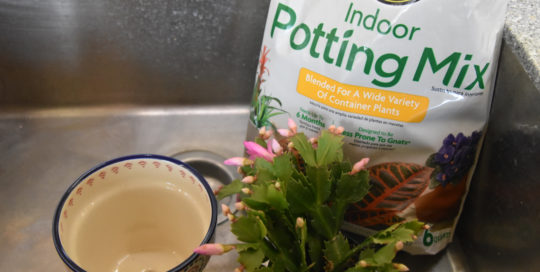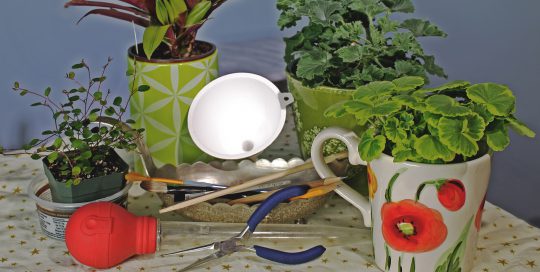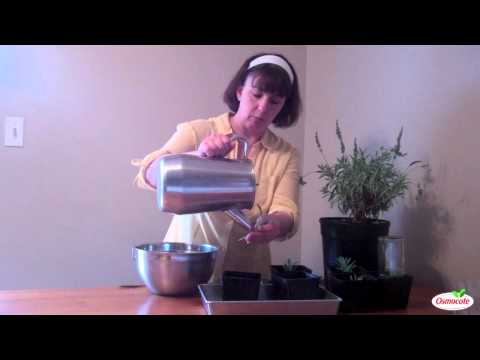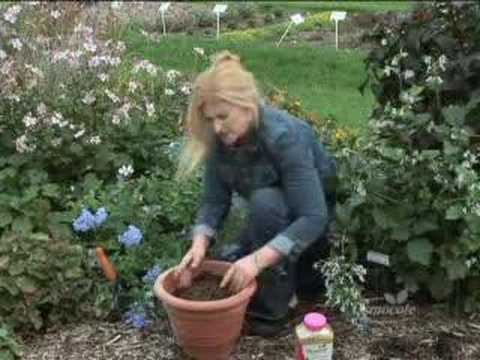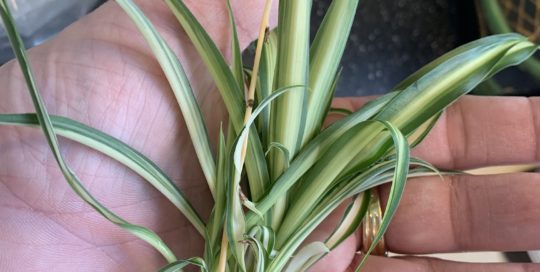Keep Them Happy
Ferns have a reputation for being finicky indoors because they rebel against the dry heat created by home furnaces. To stave off the desiccation, keep the thermostat as low as you can tolerate. We keep our thermostat no higher than 65 degrees F and have a humidifier connected to our furnace. Also, plants actually have a humidifying effect on the atmosphere. The trick is to group plants together as much as possible to boost humidity. However, keep them far enough apart to promote good air circulation.
My sunroom has two overhead fans that run most of the day to increase air movement. While a plant’s above-ground parts love moist air, its roots aren’t big on wet soil. It’s a balancing act to be sure, but most indoor plants prefer a breather between drinks. This is especially true for new cuttings because an immature root system is easily overwhelmed by too much water. I find a heat mat very helpful beneath pots of new plants.
I gather pots of newly-started cuttings together into a plastic storage box that has been covered on the bottom inch or so with clean pebbles. Make sure to smooth the pebbles so the pots can rest on top of them and add plain water so that the top of the pebbles are wet, but not so the water covers the pebbles. The goal is to keep the pot bottoms out of the water. Add a humidity dome that you can purchase at a garden center, or you can even use a large plastic clamshell container that salad comes in at the supermarket.
Grow Plants For a Purpose
Space is always limited indoors. To an extent, I practice the same routine as I do outdoors. Buy many small plants instead of few big plants so you can try more varieties. I try to grow at least two of each variety indoors. That way, in case something happens to one, you have a back-up. It also makes it easier to share with other plant-lovers.
I like to create mixed containers for indoors, and change them up throughout the winter. This works best if each plant is in a small pot. Whether it’s square or round, limit their size to no more than three inches wide.
Hancock recommends keeping the plants in their own pots so that it’s easier to swap different varieties out whenever you’d like. “I actually do this at home myself by putting a few small grower’s pots in one large decorative pot, then covering the top of all the pots with moss so you can’t tell they’re individual,” says Hancock. “Right now I have three varieties of gold-variegated ivy in a blue-and-gray pot. It’s fun! As the holidays come closer, I’ll swap the gold-variegated ones out for white-variegated types.”
There is no end to the combinations you can create using all foliage plants in a variety of heights and habits. Add some decorations depending on the occasion, and it’s a great centerpiece or even hostess gift.

